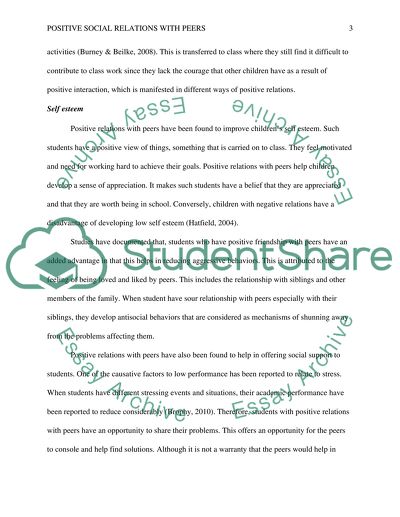Cite this document
(“Positive social relations with peers are important for learning and Essay”, n.d.)
Positive social relations with peers are important for learning and Essay. Retrieved from https://studentshare.org/psychology/1644470-positive-social-relations-with-peers-are-important-for-learning-and-engagement-in-school-discuss-this-view-in-relation-to-research-on-sociometric-status-friendship-and-peer-social-groups
Positive social relations with peers are important for learning and Essay. Retrieved from https://studentshare.org/psychology/1644470-positive-social-relations-with-peers-are-important-for-learning-and-engagement-in-school-discuss-this-view-in-relation-to-research-on-sociometric-status-friendship-and-peer-social-groups
(Positive Social Relations With Peers Are Important for Learning and Essay)
Positive Social Relations With Peers Are Important for Learning and Essay. https://studentshare.org/psychology/1644470-positive-social-relations-with-peers-are-important-for-learning-and-engagement-in-school-discuss-this-view-in-relation-to-research-on-sociometric-status-friendship-and-peer-social-groups.
Positive Social Relations With Peers Are Important for Learning and Essay. https://studentshare.org/psychology/1644470-positive-social-relations-with-peers-are-important-for-learning-and-engagement-in-school-discuss-this-view-in-relation-to-research-on-sociometric-status-friendship-and-peer-social-groups.
“Positive Social Relations With Peers Are Important for Learning and Essay”, n.d. https://studentshare.org/psychology/1644470-positive-social-relations-with-peers-are-important-for-learning-and-engagement-in-school-discuss-this-view-in-relation-to-research-on-sociometric-status-friendship-and-peer-social-groups.


